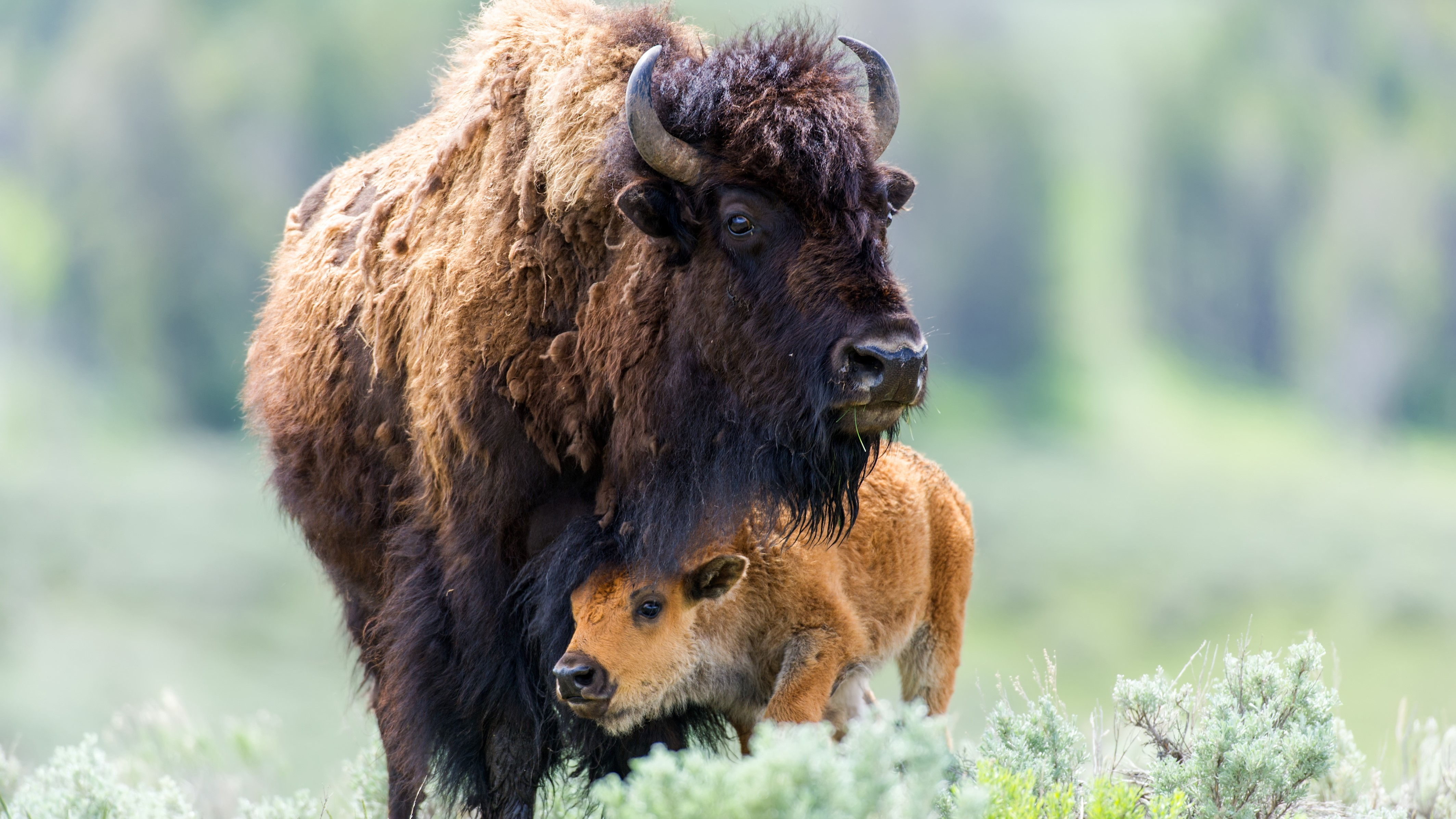
A tiny bison calf brought traffic to a standstill at Yellowstone National Park last week, when it decided to take a rest in the middle of the road. The tiny calf's mother took the opportunity to groom it, and the rest of the herd blocked traffic until the youngster was ready to move on.
The heartwarming moment (which you can watch below) was captured by park visitor Linda Kinzy, who shared a video on Facebook.
"Awesome bison jam today," she wrote. "This little one caused quite the traffic backup in both directions. Mom and the other guardian bison said 'You shall not pass!'"
According to the National Park Service (NPS), 80% of bison at Yellowstone are born between April and May. This is due to 'birth synchrony', which is an evolutionary adaptation that causes females of a species to give birth within a specific narrow window of time. Many births within a herd will take place within just a few weeks.
Bison calves, like the one in the video above, are born with a reddish-colored coat, which has led to the nickname 'red dogs'. They start nursing within 10-30 minutes of birth, and begin drinking water and grazing on tender grass within a week.
Springtime bison safety
Red dogs are one of Yellowstone's main springtime attractions, but if you're planning a visit, make sure you keep your distance. Although bison are usually docile, they are wild animals and can be unpredictable. Females are particularly defensive at this time of year, and are likely to attack if they feel their calves are threatened.
The NPS recommends staying at least 25 yards (23 meters) from bison and elk at all times. If you're not quite sure, try holding out your arm, closing one eye, and giving the animal a thumbs-up. If you can obscure the animal completely with your thumb, you're far enough away.
For more advice, see our guides how to avoid being gored by a bison and wildlife safety: eight tips for unexpected encounters.
- The best hiking boots: tested and rated by Advnture's experts







